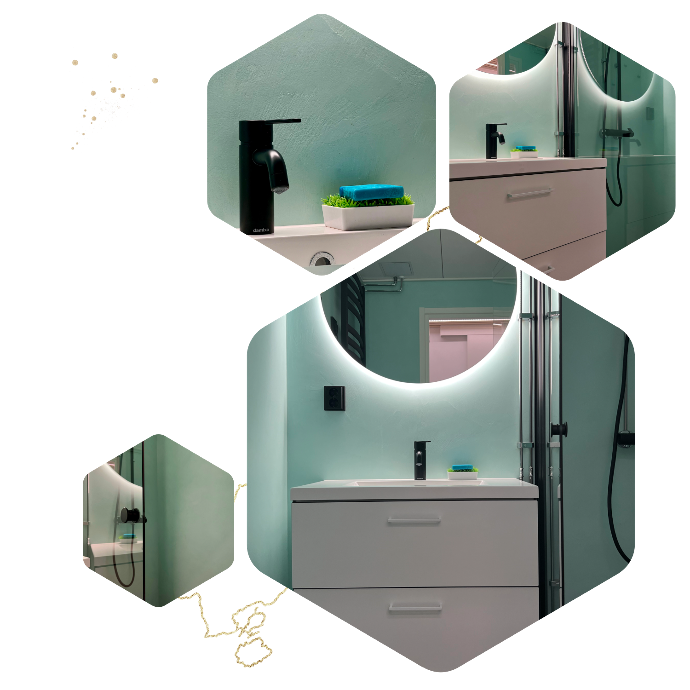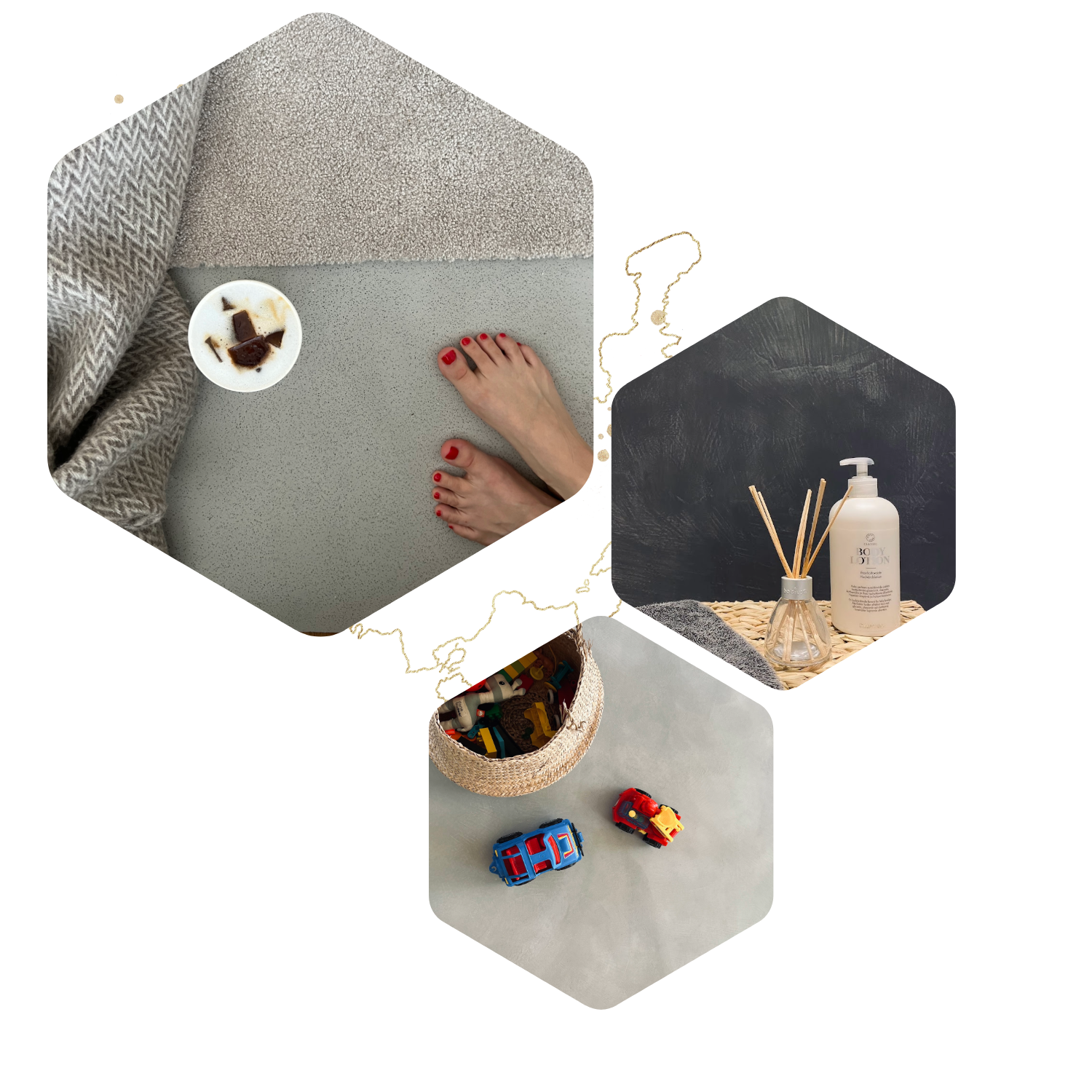When we talk about seamless surface materials, and that's what a consumer wants in their home, for example, it's difficult to know what the difference is between the various terms and whether they're all the same in the end.Should you always choose between microcement, resin coating and interior plaster depending on the project, or is it a case of guessing? Don't worry, we'll give you the lowdown in as plain a language as possible..

What is microcement?
Although microcement is a product in its own right, with its own set of characteristics, it has also become established in the vernacular as a generic roofing term for all kinds of seamless surface materials. For example, it is common to say that a bathroom has microcement surfaces if the bathroom is seamless, regardless of whether the product is technically microcement or something else, which tends to confuse those looking for the right coating in an already confusing jungle. A more accurate term for all of these would be decorative plaster. All micro-cements, resinous coatings and others are, after all, mortar-like thin coatings or decorative plasters designed for interior decoration and used as a surface material in place of, for example, tiles, parquet or wall paint. Put simply, they all have a similar idea: to provide a seamless, easy-to-clean and attractive surface that is also as hard-wearing as possible..
Now to what exactly is micro-cement?
The different plaster names come very much from the binder used in the product.
Microcement is, as the name suggests, a cementitious binder product often mixed with acrylate dispersion. Such products are called 2-component microcements. There are also so-called single component microcements on the market, where the powdered part is mixed with water, often containing water soluble acrylate additives in addition to the cement based binder, which, when mixed, dissolve in the mixture. The colouring of microcements is carried out on site either by means of dispensable colour pastes or, alternatively, the pigments are supplied as a dry substance, either ready-mixed in the product itself or as separately supplied powders. Translated with

What about resin coating, what is it and is it any different from microcement?
jotenkin?
The resin coating has a resin as its name implies, and a very common resin is epoxy resin, a combination of epoxy and hardener. In principle, resin coatings are at least two-component coatings, but there are also products on the market with three components that can be mixed together. As a rule, resin coatings sold in Finland are waterborne. The products often have a paste-like mortar component mixed with a liquid hardener component. The tinting of resin coatings is done either by machine or, alternatively, with colour pastes dispensed on site. Translated with
There are also so-called ready-to-use products on the market, which are referred to as ready-to-use microcements or ready-to-use resin coatings. Very often, these products use acrylate as a binder, so although they are referred to as microcement or resin coating, they are not really such and cannot be expected to have the same properties as two-component products..
All products have one important question in common:
Whether it's microcement, resin coating or any type of decorative plaster, one essential question when comparing products is what the price includes. There are products on the market that are sold on a per square metre basis, where the price includes only the top coat, i.e. only the so-called decorative layer; the base coat still has to be bought and priced separately. Then there are products where the price includes all the necessary layers and you don't have to buy or fuss about the suitability of the primer under the top layer. So find out whether the package you are considering has everything you need, or whether the seemingly low price is a surprise and will mean more research and additional costs.
The challenge of choosing the right product is that you can easily get the feeling that all coatings look very much the same and that it is impossible to tell which one is right for you. It is therefore essential to find out what lies behind the appearance, what the coating you are considering is made for, what it can withstand and, above all, what you need to consider. For example, a coating that is as breathable as possible for a basement is a must, but in most cases the same product is not the most suitable for a swimming pool or a large family bathroom.

Seamless surface materials are usually chosen for two reasons: ease of cleaning and appearance. To ensure that both of these characteristics are still present in the surface after many years, it is essential both to treat the surface correctly and to choose the product with the intended use and your own quality requirements in mind. It is also worth finding out about the maintenance of different products, so that you know what to expect from the surface before you choose and how to treat it in the future.
Is it difficult to choose the right product then? Although it may sound difficult at this point, it is not. It takes interest and a little more research to find out which features are best suited to your particular application. In any case, the same process has to be followed for, say, the tiling or the grout for the tiles. So don't rush into a decision, but also don't be afraid, ask when you don't know and above all: dream big and claim big, it's your home.
